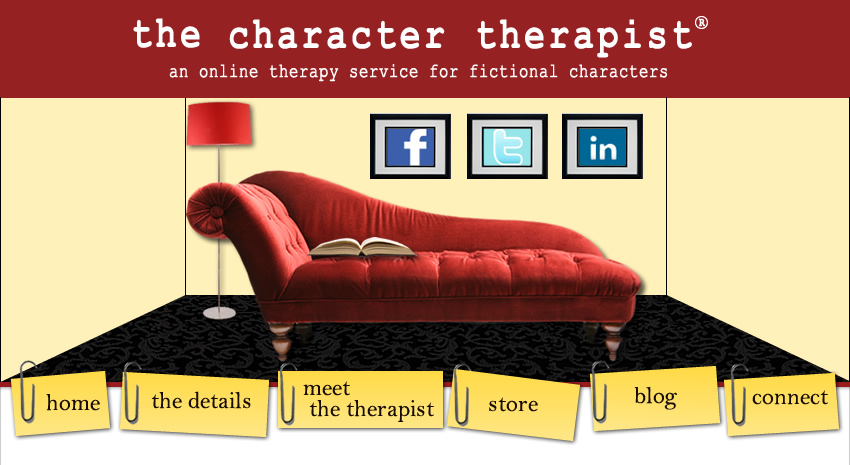I thought I'd share with you the stages of CISD in case you want to use them in your novels. CISD is not therapy. It's goal is to try to return the affected group of people back to their normal level of functioning. Post-traumatic stress reactions are normalized and mitigated through this CISD process.
A critical incident is anything that produces a significant emotional reaction now or later. It's usually something extreme (outside the range of ordinary human experiences) and traumatic. The debriefing is recommended to occur within a 24-72 hour window, preferably toward the earlier time period. Usually a mental health professional leads the discussion.
There are seven phases to the "Mitchell Model" of CISD, which I've listed below with a description of each (courtesy of Brian G. Jatczak of Eastern Michigan University). The Mitchell Model was developed by Dr. Jeffrey Mitchell.
1. Introduction: The introduction phase of a debriefing is when the team leader introduces the CISD process and approach, encourages participation by the group, and sets the ground rules by which the debriefing will operate. Generally, these guidelines involve issues of confidentiality, attendance for the full duration of the group, however with non-forced participation in discussions and the establishment of a supportive, noncritical atmosphere.
2. Fact Phase: During this phase, the group members are asked to describe briefly their job or role during the incident and, from their own perspective, some facts regarding what happened. Usually, a few individuals provide core facts while others fill in the missing details. The basic question is: "What did you do at the scene?" For those not at the actual scene, the questions would be, "Where were you when you found out?" "Who told you?" "What were you doing when you heard?"
3. Thought Phase: Touching on the emotional aspects begins during the thought phase. The CISD leader asks the group members to discuss their first thoughts during the critical incident: "What went through your mind after you came back from auto-pilot?" I usually try to normalize the fact that many people have shocking thoughts that might often cause distress later when they reflect on their initial thoughts.
4. Reaction Phase: This phase is designed to move the group participants from the predominantly cognitive level of intellectual processing into the emotional level of processing. "What was the worst part of the incident for you?" "How did it make you feel?" This is the most intense phase of the process. Not everyone will feel comfortable sharing his or her feelings in this phase. However, listening to the others talk about their feelings during this phase of the debriefing will be beneficial in and of itself. Many participants will discover that the reactions they had or are currently experiencing are similar to the feelings and reactions of their peers.
5. Symptom Phase: This phase begins the movement back from the predominantly emotional processing level toward the cognitive processing level. Participants are asked to describe their physical, cognitive, emotional, and behavioral signs and symptoms of distress which appeared (1) at the scene or within 24 hours of the incident, (2) a few days after the incident, and (3) are still being experienced at the time of the debriefing: "What have you been experiencing since the incident?"
6. Teaching Phase: Information is exchanged about the nature of the stress response and the expected physiological and psychological reactions to critical incidents. The process of critical incident stress, stress reactions, and techniques to decrease stress are explored. I like to give a handout (click to download) that fully explains the variety of reactions people can have. This serves to normalize the stress and coping response, and provides a basis for questions and answers: "What can we learn from this experience?"
7. Re-entry Phase: This is a wrap-up, in which any additional questions or statements are addressed, referral for individual follow-ups are made, and general group solidarity and bonding are reinforced: "How can we help one another the next time something like this occurs?" and "Was there anything that we left out?"
This pretty much explains what I've done the last 2 days. It's not easy, but it's very helpful to most people. Hope you can benefit from this as well!
FYI - A good book to check out that utilizes a version of CISD is Candace Calvert's Critical Care










4 comments:
At university, I heard that CSID's can re-traumatise people and make matters worse. Since you're actually doing them, I'm guessing you'd make a good judge. Have you found them to be generally more helpful? Do they sometimes harm, or re-traumatise, the individuals?
shannon - that's definitely part of the controversy surrounding using this process method. i haven't found it to re-traumatize anyone, but i suppose there are people who go under the radar. i expect lots of crying and even incoherent talk as people wrestle with their grief. i guess it depends what camp you fall into....do you think that excessive crying and catharsis is retraumatizing someone? that's all i've ever experienced happening to people during this. but you should definitely read up on the pros and cons....here is a good link: Download
hope that link works....
I'm sure you helped more people than not. Maybe it's kind of like passing out cookies - there might be a diabetic who the cookie will be bad for but most people enjoy them?
Sorry for the lame analogy! :( It's just that you tried to do something and that has got to be better than doing nothing.
I think the main controversy behind it is timing as it's fairly quick on the heels of the event and its generally enforced by one's employers. Of course, a really good therapist like Jeannie is bound to have ways of off-setting some of that.
Post a Comment
Both comments and questions are welcome. I hope you enjoyed your time on the couch today.